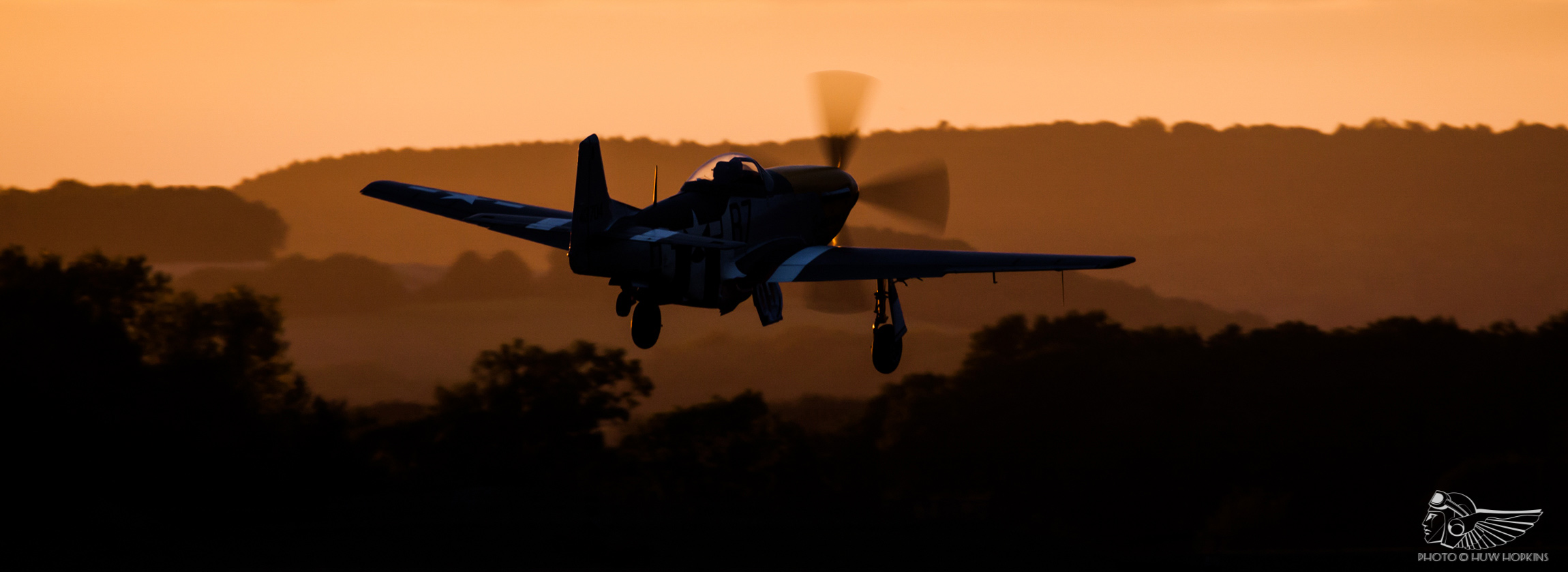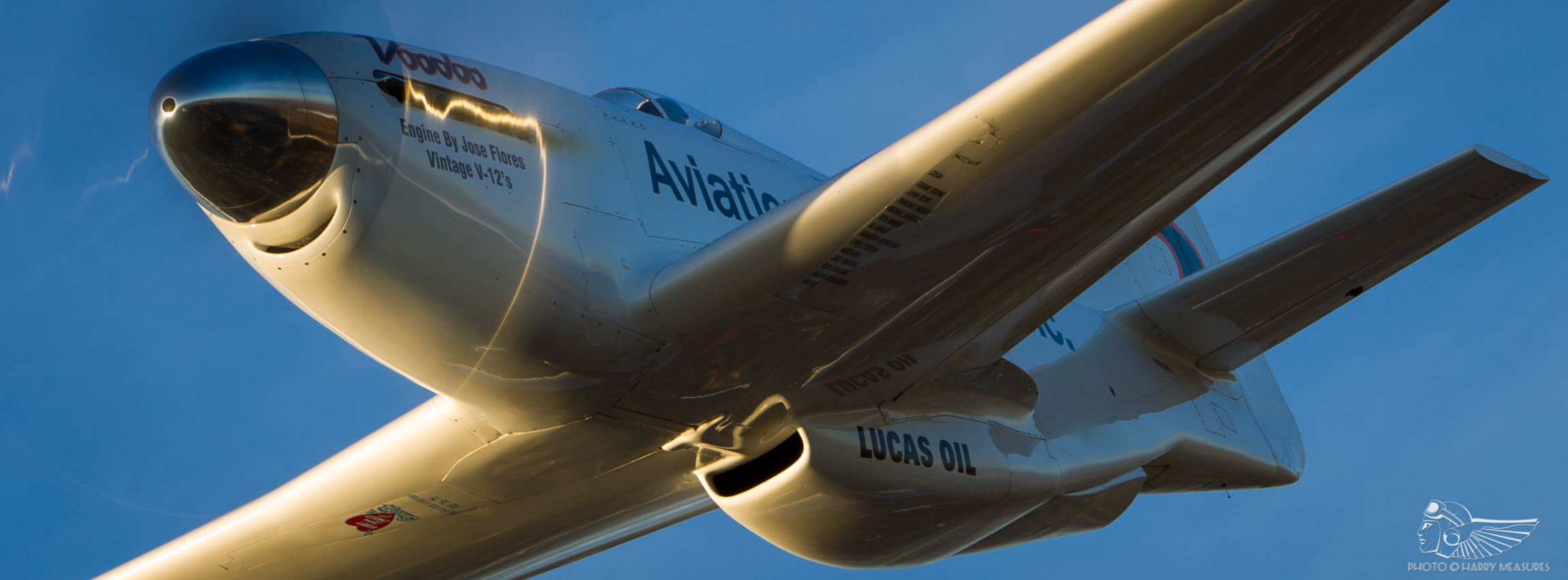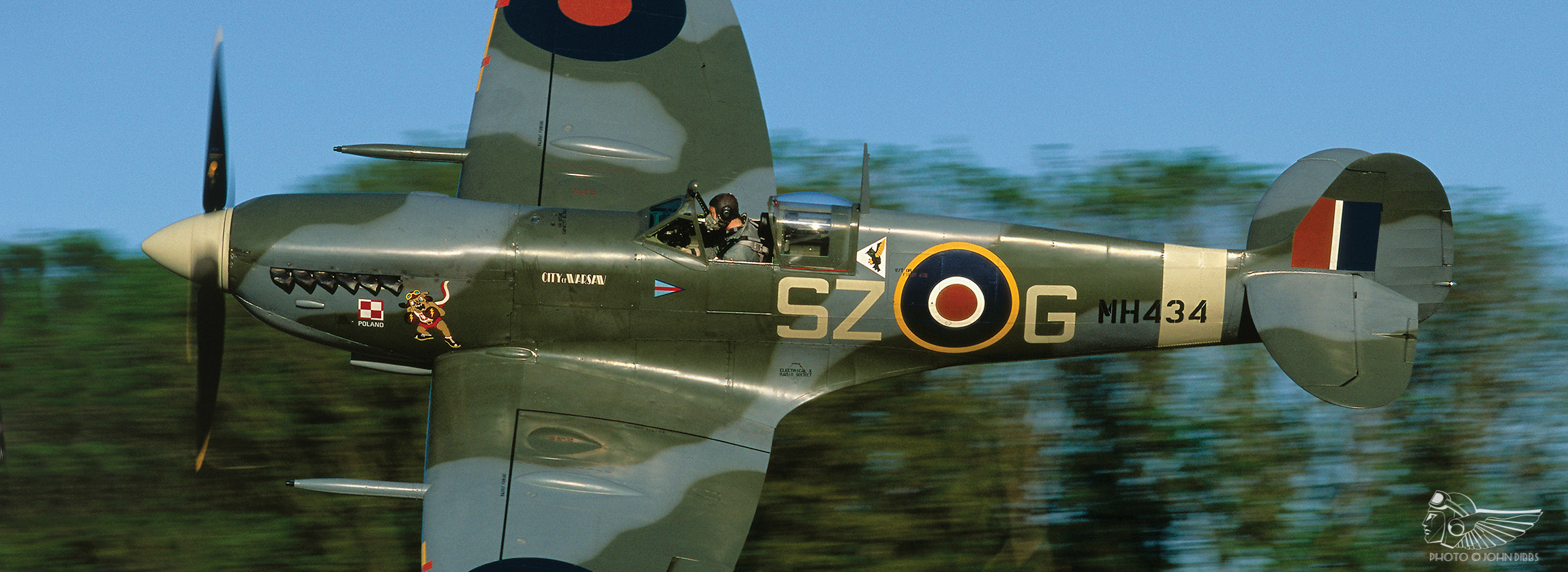If nothing else, the COVID-19 pandemic has left many of us with time on our hands. For some, that time has been put to good use exploring a new hobby, or dedicating more time to an existing one. I’ve been trying to use the quieter year to sift through over a decade of digital aviation photographs – a task approached with more than a wince! I’m stuck in my ways when it comes to photo cataloguing and editing and have been putting off the task of switching my editing workflow to Adobe Lightroom. Inevitably, this has made the transition even more difficult! Whilst the seemingly endless task of organising a new digital photo library has been excruciating at times, the upside is that it has brought back a lot of happy memories from years past.
Flying Legends 2003 was my first airshow after several years’ hiatus, and from 2010 I immersed myself in the historic scene, the last decade marking a period of relentless travel to airshows, museums, fly-ins and special events. COVID-19 will be a defining breakpoint for most things in life; certainly so the historic aviation scene, and with other seismic shifts such as Flying Legends moving to a new venue, the pre-2020 and post-2020 eras will feel very different indeed.
With that in mind, it’s a fitting time to look back over some of the highlights of the last decade. Though this is a meandering skim over that period, I’ve narrowed the focus to a series of themes that take stock of the great and good of the historic aviation world. It’s far from a deep dive, lest I risk staying down there forever, like DiCaprio in ‘Limbo’ in Christopher Nolan’s 2010 epic Inception. It’s been a decade of great depth and breadth; new restorations, debuts, imports and unforgettable moments aplenty. In the latter half of the decade, the historic aviation scene has faced perhaps its greatest challenges. It weathered the hard-hitting regulatory changes in the wake of the Shoreham airshow crash, and we all hope we’ll be able to say the same of the COVID pandemic that has decimated airshows worldwide since early 2020. We look to the future with uncertainty and optimism, and perhaps because of that we’re inclined to meditate on what has come before.
The great Great War resurgence
Though lacking the fanfare of blockbuster Second World War warbird restorations, Great War aviation has enjoyed a quiet resurgence in recent years. Huge strides have been made by workshops around the world to revive unique or rare century-old aeroplanes.
In 2012, we briefly saw The Vintage Aviator Ltd’s (TVAL) beautiful R.E.8 and Albatros DVa reproductions before they were retired to the Grahame-White Hangar at the RAF Museum Hendon. The pair appeared at a few airshows in 2012, but two displays linger in the memory – their ‘dogfight’ with the Nieuport 17 and Fokker Dr.1 replicas at Duxford’s September Air Show, and the Shuttleworth Uncovered airshow, where they flew with the Bristol F2b and SE5a. More TVAL aircraft followed the R.E.8 and Albatros’ path to the UK; a second Albatros DVa, a pair of BE2es and the brutish Sopwith Snipe. All bar a single BE2e have returned to New Zealand, but we’ve seen another Albatros come the other way to join the WWI Aviation Heritage Trust at Stow Maries. The Bremners’ wonderfully realised Bristol Scout, Tom Harris’ Avro 504 and the Historic Aircraft Collection’s DH-9 are three home-grown restorations that have taken flight in recent years, the latter being one of the most remarkable historic aviation projects ever undertaken.
At Old Warden, that great bastion of vintage aviation, an already considerable First World War contingent was burgeoned by the return to the air of the Shuttleworth Collection’s Bristol M1c after many years ground-bound, followed by the first flight of the Northern Aeroplane Workshop’s Sopwith Camel reproduction. Roy Palmer’s lovely SE5a reproduction returned to flight and is based at Old Warden, and we await the day we see a pair of SE5s in the air. Amazing aircraft, and great diversity – the full gamut of First World War types represented, from early observation types to late-war bombers and fighters, contextualising the variance in designs, power and speed in a way the history books can’t. That this is happening 100 years after the end of the conflict is just magnificent.
Racing back to the Golden Age
Shuttleworth has become a hub for classic racing aeroplanes from the golden age of aviation, beginning with the purchase of Mew Gull G-AEXF from the Real Aeroplane Company in 2013 – one of those acquisitions that just feels right. The following year, the jewel in the Shuttleworth Collection’s crown – DH88 Comet Grosvenor House – returned to flight after a lengthy period of repair and restoration, and the acquisition of Miles Hawk Speed Six G-ADGP in 2018 completed a hit pack of based racers. The innovative Race Day airshows, a staple of the Shuttleworth events calendar since 2014, have gathered many aircraft with racing connections; this has seen the Collection’s racers joined by visitors such as Dave Beale’s stunning Mew Gull reproduction, Travel Air Mystery Ship replica G-TATR, Phil Cozens’ Comper Swift reproduction G-ECTF and Dave Reid’s Chilton DW1a reproduction G-JUJU – all stunning examples that have flown in the decade. The result is true Shangri-La for the vintage aviation aficionado!
Breadth and Depth
The warbird scene has truly blossomed, with inter and early war types in particular enjoying a renaissance. The debuts of the Historic Aircraft Collection’s Hawker Fury Mk I and The Fighter Collection’s Gloster Gladiator Mk II brought about displays by a quartet of Hawker biplanes and a pair of Gladiators. Silvered dreams – sights not seen since the 1940s. Meantime, from the Aircraft Restoration Company’s workshops the Bristol Blenheim Mk 1F and Westland Lysander emerged in 2014 and 2018 respectively, and in September 2019 we saw a quartet of Blenheim, two Lysanders and Gladiator flying together at Duxford. Five Bristol Mercury engines in formation for the first time since the late 1990s. The airworthy population of Mk I Spitfires also burgeoned in the first half of the decade, with P9374, X4650 and N3200 all flying post-restoration – the four Mk Is (AR213 included) flew together just once, at Flying Legends 2014. The restorations of Hawker Hurricanes P3717, P2902 and V7497 all concluded, whilst AE977 was imported to the UK after many years in North America. The culmination was a seven-strong Hurricane formation at the Shuttleworth Military Pageant in 2019 – a decade highlight. The quartets of Hawker biplanes, Mercury-powered aircraft and Spitfire Mk Is were one-offs; a reminder, if ever we needed one, that we are incredibly lucky to have such a strong vintage scene in the UK, but that we must not take it for granted.
The change in CAA Safety Standards Acknowledgement and Consent (SSAC) regulations has allowed the market for historic aircraft pleasure flights to blossom, particularly amongst two-seat Spitfire operators. Love them or loathe them, the business generated by the TIXs has buoyed the warbird scene in the UK, which can only be positive for historic aircraft preservation. Spitfires aside, there are now opportunities to fly in Hurricane, Mustang, Buchón, Huey, and myriad other types. The revenue is fundamental to their upkeep, and the filtering of funds to owners and operators is certainly no bad thing.
The Rise of Air Leasing
Sywell-based Air Leasing has grown in the last decade from a small operation maintaining the Grace family’s Spitfire ML407 into a lynchpin of the UK warbird scene. The importation, overhaul and operation of aircraft for customers has seen a range of aircraft pass through its doors – Yak-3s ‘White 100’ and G-OLEG, Seafire LF IIIc PP972, Spitfire Mk Vb EE602, Hurricane P2902, Mustang Contrary Mary, Thunderbolt Nellie B and several Hispano Buchóns – and, most importantly, many aircraft operated under its umbrella have been very active on the European airshow scene.
The number of pilots brought into the fold has breathed life into the scene, which bodes well for the future of the warbird movement in particular. The decade saw the passing of the torch – as the likes of Stephen Grey, Rod Dean, Keith Skilling, Nigel Lamb, Alister Kay and Carl Schofield have retired, we’ve seen Richard Grace, Dave Puleston, Will Greenwood, Chris Carder, Andy Durston, Jon Gowdy, Eskil Amdal and others establish themselves as prominent fixtures on the airshow circuit. Indeed, Air Leasing has been at the forefront of this, and it is the combination of aircraft and new blood that inspired the formation of a new warbird aerobatic team in 2019 – The Ultimate Fighters – flying Thunderbolt, Spitfire Mk Vb, Buchón and Mustang, piloted by Messrs Grace, Gowdy, Durston and Puleston. Formation aerobatics in warbirds are always a treat, but have been few and far between in recent years.
Legends never die
Flying Legends at Duxford was a constant throughout the last decade. Only the COVID pandemic curtailed its unbroken 26-year run. Unbeknownst to us at the time, 2019 was the last ‘Legends at Duxford; from 2021, the event will relocate to Sywell, occupying the same weekend in July (provided the public health situation permits outdoor events to go ahead). For many warbird enthusiasts, Flying Legends at Duxford sparked the flame of interest in vintage aircraft – I know that is true for me and several others I know – and saying goodbye to that combination of airshow and venue is sad. That said, Flying Legends is made by the people; visitors domestic and international, be they spectators or participants, are essential to the heady atmosphere. Doubtless it will be so at Sywell.
Flying Legends has cultivated a truly exceptional 26-year body of work. The last decade culminated in the conclusion of Legends’ tenure at Duxford, but we’re left with a catalogue of memories from its time at Duxford. Myriad Mustangs have been brought over in the past 10 years, all from the Comanche stable – in 2011, P-51s Fragile but Agile and February made up the Horsemen’s ‘coke classic’ two-ship routine; P-51C Princess Elizabeth was still in town for 2013’s show (following the Eagle Squadron commemoration in May), whilst P-51B Berlin Express was flown across the Atlantic, and P-51D Frenesi shipped over, in 2017. The one standout import was the appearance of the Planes of Fame Air Museum’s Boeing P-26 Peashooter in 2014, a type believed to have never flown in UK skies – a real decade highlight, that!
Debuts in that time were many and varied. The Fighter Collection’s P-40F Warhawk Lee’s Hope just made the show in 2011 following shipment from Australia, whilst its long-awaited razorback P-47 Thunderbolt restoration, marked as 78th Fighter Group machine Snafu / War Eagle, made its first appearance in 2012. Spitfire Mk I X4650 and Seafire LF IIIc made their display debuts (2012 and 2015), whilst The Fighter Collection’s pursuit fighter pair of P-40C Warhawk and P-36C Mohawk came along in 2014 and 2015 respectively. The latter part of the decade saw many of the Air Leasing stable making their first public displays; Hawker Fury, Hurricane P2902 and several of the Buchóns all broke cover at Flying Legends. Long may the show’s successes continue.
The One-Offs
Four landmark events stand out from the countless airshows and displays of the last decade – the Eagle Squadron at Duxford in 2013, the Canadian Warplane Heritage Museum’s Lancaster tour in 2014, the Battle of Britain 75th anniversary commemorations throughout 2015, and 2019’s D-Day Squadron European visit.
The Duxford Spring Air Show 2013’s Eagle Squadron commemoration came as a surprise when it was announced. Organised by Comanche Fighters and associates, the unique display comprised Hurricane, Spitfire Mk I, P-51C Mustang Princess Elizabeth (imported specially from the USA) and P-47 Thunderbolt Snafu, representing the succession of types flown by American pilots in the European theatre. Paul Bonhomme led the flight with Dan Friedkin, Ed Shipley and Steve Hinton alongside, flying initially as a box-four with a series of formation passes before the RAF and USAAF fighters split into their respective pairs for dynamic aerobatic routines. The May airshow was then a single day event, and many were present on the Saturday for the Eagle Squadron’s late afternoon practice; the atmosphere was electric, the golden-hued practice standing out as a decade high. During the airshow proper, the quartet formed up on the wings of B-17 Flying Fortress Sally B, with the Mustang performing a ‘missing man’ vertical break, prior to the four-ship display. The fighters took to the air later in the show for a flypast with the Red Arrows. On the Bank Holiday Monday, Veteran’s Day for Americans, the quartet of fighters undertook an aerial tour over East Anglia, overflying former RAF Eagle Squadron and USAAF bases. It was a scorching weekend under clear blue skies, the beginning of a long, hot summer of airshows that year. Heady days!
In 2014, we were treated to the most incredible meeting – the world’s two airworthy Lancasters, brought together for a brief summer tour. I will never forget the first time seeing them at the Shuttleworth Proms, in the evening air, displaying to the Dambusters March. We’re accustomed to seeing large formations of Merlin-powered warbirds nowadays, but the sweet cacophony of the two Lancasters’ eight Merlins was something else. It was good sport to get to as many shows as possible to see them – a summer of Lanc chasing!
The 2015 airshow season could easily have felt underwhelming in the wake of the Lancaster tour, but all credit to organisers and operators for commemorating the Battle of Britain 75th anniversary so thoroughly. The Battle of Britain tends to be marked by major events every five years, but the 75th just had that bit more oomph. More events embraced the theme in a big way, and each had their own unique selling points. The journey through summer took us from the Biggin Hill Festival of Flight’s smaller scale airfield attack and RAF/BBMF-led set-pieces, RIAT’s big formation of RAF and Luftwaffe fighters, Biggin Hill’s monumental Hardest Day commemoration, and the Goodwood Revival and Battle of Britain Day dual commemorations that assembled two dozen Spitfires, six Hurricanes and the Blenheim. All roads led to Duxford, and a three-tiered 17 Spitfire (and Seafire) sequence concluded the Battle of Britain Air Show. Magnificent stuff, but it’s the one-offs – Biggin’s Hardest Day tribute and Goodwood’s Battle of Britain day commemorations, both so distinct and poignant in their respective aerial tributes – that live long in the memory. For Duxford, it marked the first of a succession of large-scale Spitfire sequences at its September airshows – now an annual Battle of Britain ‘do’ – that are threatened by the law of diminishing returns; what was once a spectacle to be savoured every five years has now concluded the last five Duxford September airshows. Summer 2015 feels all the sweeter now.
We’d seen two US-based C-47s – Whisky 7 and Placid Lassie – visiting the UK for events in 2014, the D-Day 70th anniversary year, during which time they flew a beautiful four-ship with two native Dakotas at Duxford’s D-Day airshow. Five years later, the US Dakota operators surpassed themselves and flew 15 aeroplanes (amongst them C-41, C-47s, DC-3s and C-53s) across the Atlantic to participate in the Dakotas over Duxford/Normandy parachute drops and commemorative flypasts. A hell of an undertaking. They joined Dakotas from across Europe, bringing the total numbers gathered in Duxford and then Caen to 23. I was lucky that my holiday to Scotland coincided with an “open house” at Prestwick, where many of the Dakotas were parked up during the last leg of their transatlantic crossing. Despite the rain, it was great to be able to get up-close to the aircraft and speak to the enthusiastic crews. The following week, with most of the squadron at Duxford undertaking post-crossing maintenance and formation flying, a last-minute appearance of seven of the aircraft at the Shuttleworth Collection’s June Airshow was arranged, with the aircraft landing at Old Warden the day before. The open paddock the following morning was just sublime, with access to many of the aircraft and crews – the Americans just loved Shuttleworth! Seeing the aircraft over Normandy during the 75th anniversary commemorations the following week was the icing on the cake.
Classic jets to classic helicopters
The classic jet scene was in decline for years before the Shoreham airshow Hunter crash accelerated its collapse. That said, we do have some great things to look back on from the last decade – we enjoyed the majority of Vulcan XH558’s second flying career, the gorgeous Meteor T.7 flew, the Sea Vixen made numerous well-received appearances, and there was generally a good population of Hunters, Vampires, Venoms, Gnats and the like for the first half-decade, as well as the occasional visit to the UK by the Swedish Air Force Historic Flight’s stable of SAAB jets. Sadly, this has dwindled, with many prominent aircraft grounded (Vulcan, Sea Vixen, Meteor NF11 and Hunters) or sold abroad (more Hunters, F-86 Venom and Meteor T7), though a handful of Strikemasters, Jet Provosts and Gnats soldier on and the Norwegian Historic Flight’s T-33, MiG-15 and Vampires are still warmly welcome each summer. Even the second-best experience that could be had at Bruntingthorpe, which looked as if it could become a nice haven for active ground-running classic jets into the future, has met its demise.
On a more positive note, the classic helicopter scene burgeoned in the latter part of the decade. Historic Helicopters at Chard, Somerset are at the forefront, having resurrected the Whirlwind, Wessex and Sea King in quick succession. Another Junglie has joined the ranks, with more to come – waiting in the wings are a Lynx and further examples of the Wessex and Sea King. Weald Aviation’s engineers are also hard at work returning a Lynx to the skies, and maintain the population of preserved Scouts and Wasps from their Essex base. It’s long been the case that many retired ex-military types are relegated to the scrap heap, a cursory few finding their way to museums; that a growing number of helicopters are being preserved and returned to flight is a positive movement that counterbalances the inexorable decline of the ex-military jet scene.
Dwindling Shows
What was once a rich tapestry of events from May to October is now a sparser topography – dropping off the calendar in the last decade were Duxford’s Autumn Air Show, Waddington, Biggin Hill (in its popular International Air Fair format, at least), Dunsfold, Culdrose, Sywell, Shoreham, Rougham and Damyns Hall, to name but a few. We can only hope that the remaining events can shore up their future, but the combination of stringent CAA regulations and the COVID pandemic mean that the future of British airshows is far from assured.
With the demise of so many airshows, some of the remaining events have become more prominent fixtures in the calendar. The Shuttleworth Collection has refined and rejuvenated itself with subtle rebranding and a strong run of airshows. They then led the world into a new era, safely staging several drive-in airshows during summer and autumn 2020. The first of these – the world’s first, in fact – in July 2020 was just the tonic we needed after a prolonged period of lockdown. The hope is that this format will enable Old Warden to stage something approaching a full airshow calendar in 2021.
Shuttleworth has been one of the winners of the 2010s. It found its footing in terms of branding and themed events that catered for enthusiasts and casual attendees in equal measure; the creation of Race Day in particular was a master stroke that united automobile and aviation aficionados alike, whilst the popular Fly Navy events set the tone for the themed Sunday airshows. The work done by the Shuttleworth team to secure an exemption to the CAA regulations introduced in 2016 cannot be understated. It reclaimed the venue and brought about a return to something approaching normality at Old Warden. The Collection has announced a full programme of airshows for 2021, with at least the first half of the season planned as drive-in shows, which offers hope that we will be able to attend some airshows even if the Covid situation is largely the same as in 2020. Shuttleworth really is the last bastion – and dreams of summer days spent on God’s own airfield in fine company, watching the delights of the Collection take to the air, will surely pull most of us through this winter. Old Warden is simply unmissable.
The Future
And if you dare to dream, looking ahead with cautious optimism, there is plenty to look forward to. The completion of Hawker Tempest Mk II MV763 at Air Leasing marks the final chapter in one of the most anticipated restorations of recent times. All being well, 2021 will hopefully see that aircraft get airborne. Further down the line at Air Leasing are Buchón, Mustang, Bf 109G-2 and Spitfire Mk XII projects, all of which are at various stages.
The Hangar 11 Collection’s Spitfire Mk IX emerged last year resplendent in Russian markings and made its first post-restoration flight from Biggin Hill in November 2020; it will surely make its display debut somewhere this year or next (COVID situation pending) and will doubtless be a sought-after and popular new act. Meantime, the Biggin Hill Heritage Hangar continues work on desert camouflage Spitfire Mk IX LZ842 and Mk I P9372. Work has continued apace at Kennet Aviation to get Seafire XVII SX336 back in the air, whilst other projects are progressing at their own pace; though a long way off, we may, for example, see the likes of The Fighter Collection’s incredibly rare Fiat CR.42 fly at some point in the future.
Meanwhile, the People’s Mosquito build has commenced in conjunction with Retrotec Ltd, and the Pathfinder Mosquito Trust is looking to secure the late Glyn Powell’s partially-complete T.43 project in New Zealand for finishing with AvSpecs. Suffice to say, the prospect of just one Mosquito joining the circuit is tantalising enough, let alone two!
The classic helicopter scene continues to show great promise, and we will hopefully soon see the first airshow appearance of Historic Helicopters’ Sea King. That aside, as years past have shown us, you never quite know what might be just over the horizon.
Outro
It comes as no surprise that even as 2020 comes to a close and we enter another national lockdown in the UK, I have made it just a fraction of the way through my cataloguing process, the reminiscing slowing progress somewhat. The new spreadsheet I created to help track my progress confirms my fears, with nowhere near as many green columns as I’d hoped. Never mind – there will always be more time for that! Regardless, it has been a wonderful way to rekindle the memories of the aircraft, the places and the people associated with them.
The historic aircraft and airshow scenes have faced their greatest challenges during the last ten years. Perseverance has brought the industry this far, and through the efforts of owners, operators, organisers, pilots, engineers and volunteers, we have been afforded a decade of enduring memories. 2020 only served to stress the importance of appreciating the value of what we already have, and the folly of taking it all for granted. We can only hope that the rocky start to the new decade gives way to another roaring ‘20s.
Here’s to another decade in the sun.













































